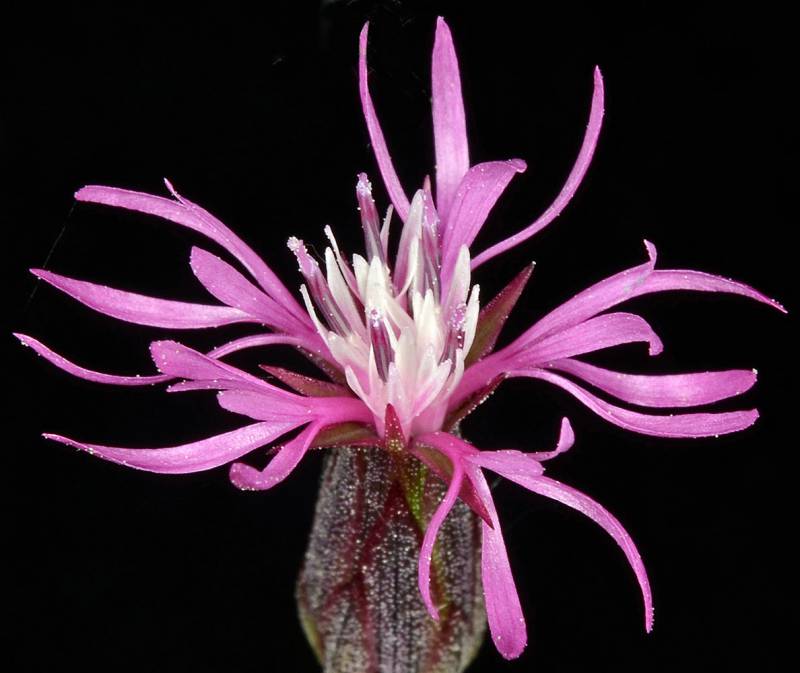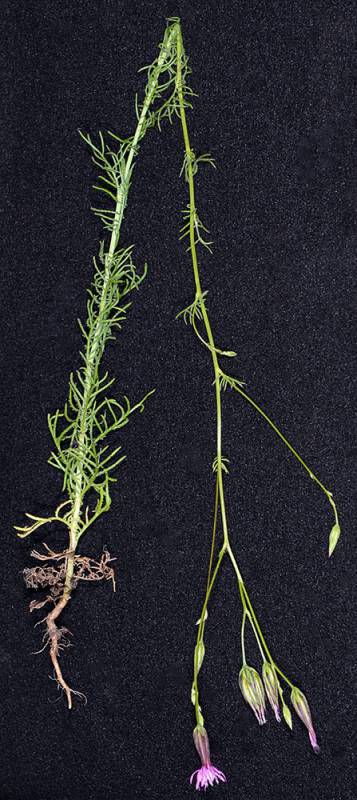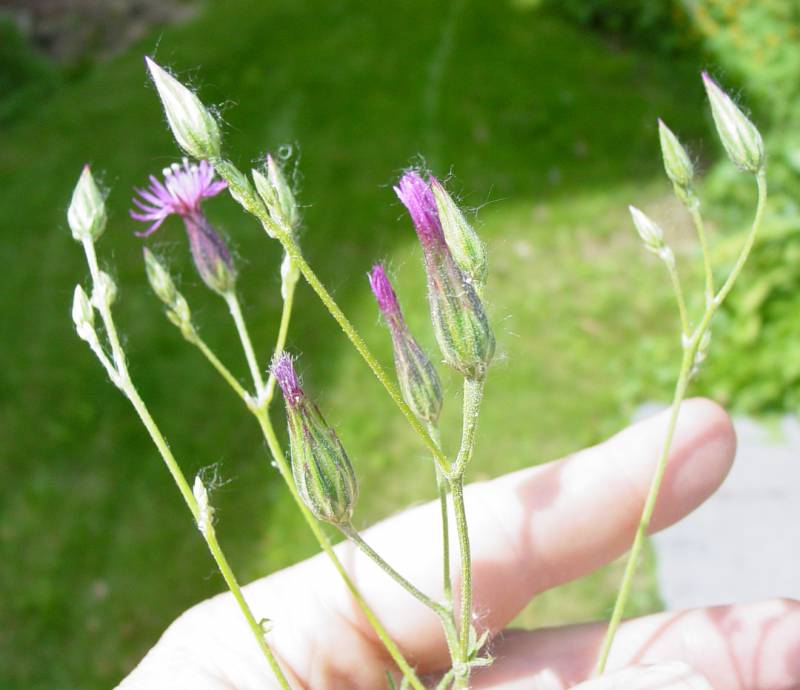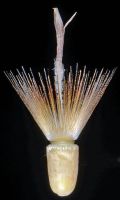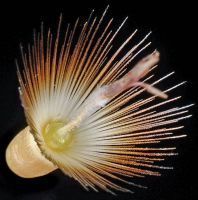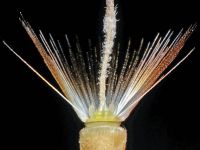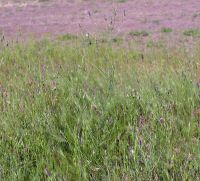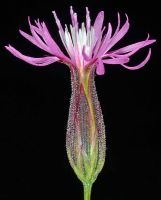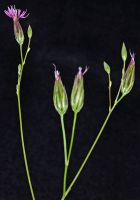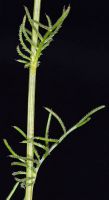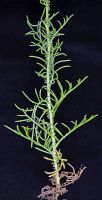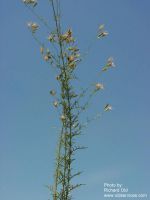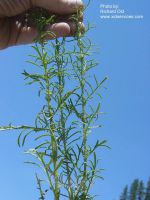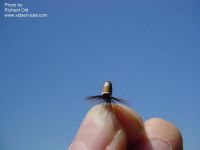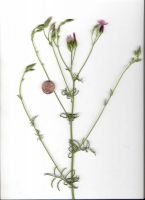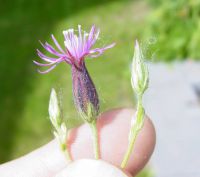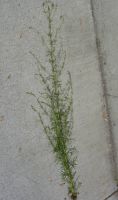Distribution: Occurring east of the Cascades crest in Washington; central and southeastern Washington to California, east to adjacent Idaho; also in eastern North America.
Habitat: Roadsides, fields, ditches, wastelots, and other disturbed, open areas.
Flowers: April-July
Origin: Introduced from Europe
Growth Duration: Annual
Conservation Status: Not of concern
Pollination: Bees, flies, beetles, wasps
Slender winter annual, 3-12 dm. tall.
Basal leaves obovate, entire, 1-3 cm. long; cauline leaves up to 7 cm. long, pinnatifid or bipinntifid, reduced upward, the segments remote, the edges glandular.
Heads naked-pedunculate, 1-5 on each branch of the inflorescence; involucre 1.5-2 cm., narrow and cylindric, the bracts imbricate in several series, tapered to a point; flowers all tubular, the tubes slender with long, narrow lobes, pink, lavender or purple; receptacle flat, covered with long, slim, chaffy bracts; inner pappus of bristles 7-10 mm. long, outer of short scales.
Achene with a ring of dark, spreading bristles on the broad end.
Publication: Dict. Sci. Nat. ed 2. 12: 68. 1818.
PNW Herbaria: Specimen records of Crupina vulgaris in the Consortium of Pacific Northwest Herbaria database
WA Flora Checklist: Crupina vulgaris checklist entry
OregonFlora: Crupina vulgaris information
E-Flora BC: Crupina vulgaris atlas page
CalPhotos: Crupina vulgaris photos

